Tags
architect, Bathurst Court House, Bathurst Gaol, Carcoar Court House, Cowra Court House, Dubbo Court House, Forbes Court House, Forbes Post and Telegraph Office, Forbes Town Hall, James Barnett, Molong Court House, Orange Court House, Orange Post and Lands Office, St Paul the Apostle Church Carcoar, Young Court House
This photograph is for study purposes only
Story and Photographs by Warrigal Mirriyuula
In December 1854 James Barnet, a native Scot from Arbroath, landed in Sydney and set himself up as a builder in Glebe. The business prospered and within 11 years he had succeeded his mentor Edmund Blacket as Colonial Architect. He was 37 years old and in the next 25 years he achieved more than he might ever have imagined.
Some of his achievements made a lasting impression on me as I wondered, as boys will, about why it was that the Orange Courthouse looked so much a courthouse. I knew nothing of Barnet then, but this local, familiar building always caught my eye. It remains today my favourite Barnet Courthouse. The Classical design is so balanced, so well resolved. The masses and proportions in a near perfect harmony that even Pericles would admire.
Orange Court House, 1883. Architect James Barnet
As I grew up I began to recognise buildings through out the Central West of NSW that seemed to be related in some way. They were often public buildings like town halls, post and telegraph offices and court houses and they began to define something in my mind; the notion of Victorian Civic Pride; the idea that for a young nation to aspire to credibility amongst the great nations of the world it needed the underpinnings of the rule of law, democratic action and communications. It needed to display the high regard it held for these things, these institutions of state legitimacy, and so within a few decades of the first settlement of the lands west of the divide, these buildings began popping up everywhere. The curious thing is that many of them were built when there was little else surrounding them. Many of the towns and villages they served had yet to develop what we might now recognise as a civic centre. These buildings stood for a time alone, like the recently arrived aliens they were, surrounded by mud or dust, slab cut huts, corrugated iron and cheap bricks, representing the hope for a future that had yet to come into being.
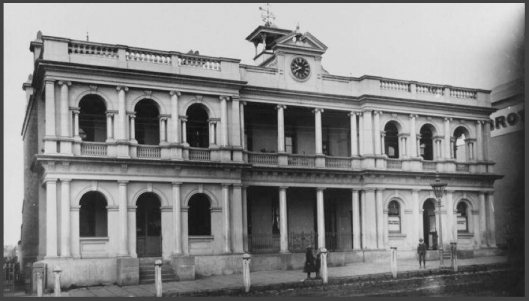 Orange Post & Lands Office, James Barnet 1885. This stuccoed brick PO still stands as handsome as ever, however more recent street plantings have almost completely obscured the entire building with foliage.
Orange Post & Lands Office, James Barnet 1885. This stuccoed brick PO still stands as handsome as ever, however more recent street plantings have almost completely obscured the entire building with foliage.
It was many years later that I finally learned that the buildings that caught my eye, made me wonder, where all designed by the one architect, James Johnstone Barnet; and it was one of his earlier buildings that had started the whole thing off.
Molong Court House (Now the Molong Police Station). James Barnet 1862
The Molong Courthouse, designed by Barnet prior to his elevation to Colonial Architect, is a modest building lacking any complex embellishment save a simple Classical pediment and vent and cornices on the chimneys. It is built from local limestone rubble masonry with dressed or rendered quoins, door and window frames, yet when it first opened for business in 1862 it would have been the most imposing building in Molong. It was still imposing the morning Dad had to drop in there when I was a little tacker. I think I might have sat on that form on the verandah while Dad entered inside. Whatever was going on in there was a deep mystery to me but, given the building, it had to be important and sitting on that form was not dissimilar to waiting outside the Principal’s office at school. Originally it was surrounded by a white picket fence.
The Molong Court House wasn’t alone in staking claim to a future grandeur not yet in evidence. There was another set of these bijou masterpieces in Carcoar, just a few miles away; though Carcoar, like Molong, never did grow in the way it was thought it might. The railway eventually followed a different line and Carcoar fell from second biggest town west of the mountains after Bathurst, to a village of just over 200 people today. Well worth visiting still, if just for the colonial era architecture and a particularly fine Devonshire Tea at the café across the street from the courthouse.
The Carcoar courthouse with its clockless clock tower displays the balance that so characterises Barnet’s best work. Once again he employs the Italianate. The tower is so relaxed in the composition of masses that the absence of a clock seems almost appropriate, literally imbuing the building with a timeless quality. I suppose the clock was going to be installed later, but that later never came.
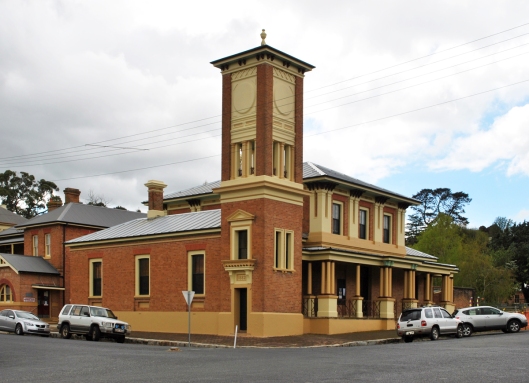 Carcoar Court House, James Barnet 1882
Carcoar Court House, James Barnet 1882
It’s of interest to note that this Italianate Barnet courthouse replaced a smaller, much simpler Neo Gothic courthouse dating from1842. Carcoar is further architecturally interesting in that it has another building that, along with Barnet’s courthouse, illustrates a stylistic transition from the Neo Gothic to The Italianate, and the type examples are by succeeding Colonial Architects, Edmund Blacket and James Barnet.
 St Paul The Apostle, Carcoar, designed by Barnet’s mentor and predecessor Edmund Blacket, displays the neo gothic that so identified Blacket’s best work, including the main quadrangle at Sydney University. (I’d have probably moved the post modern wheelie bins before taking the shot.)
St Paul The Apostle, Carcoar, designed by Barnet’s mentor and predecessor Edmund Blacket, displays the neo gothic that so identified Blacket’s best work, including the main quadrangle at Sydney University. (I’d have probably moved the post modern wheelie bins before taking the shot.)
But getting back to Barnet, perhaps the finest example and most complete exposition of his Italianate design palette when it came to country courthouses is the magnificent Bathurst Court House complex, a tour de force opened a few years prior to the Orange Court House.
Bathurst Court House, 1880 by James Barnet
Bathurst also has a fine example of Barnet’s contribution to the other side of the law. The imposing portal to Bathurst Gaol is every inch the intimidating gateway to a world wherein all hope must be given up.
The Main Portal and Deputy Governor’s Residence, now the administration building, Bathurst Gaol, James Barnett 1888
Architects describe this portal as an excellent example of the Victorian Mannerist, though I particularly like its lack of manners. It’s an unashamedly intimidating bully, sure of its power to suppress and punish miscreants. The slits cut into the sandstone masonry façade suggest unseen armed guards might protect the portal and that even venturing up that short road without legitimate purpose might end very badly indeed. As ever the Imperial Lion snarls atop the gate, a key firmly between its fierce teeth: Subtext: The Victorians didn’t like crooks and punishment was meant to be just that, unrelentingly punishing.
These Barnet buildings are all over NSW and to the west of Orange, the early gold town of Forbes celebrated its prosperity with a very fine Barnet collection including both a handsome Post Office and a more modest Courthouse that successfully suggests that justice may after all be measured in the more democratic aspirations of the common people and not be the exclusive domain of the wealthy and connected.
 Forbes Town Hall on the left, (George McKinnon 1890-1) and The Post and Telegraph Office on the right (James Barnet 1881). Note the acknowledgement between the buildings which both look out to a park surrounded by many fine buildings creating a substantial and attractive civic precinct, which includes another Barnet courthouse.
Forbes Town Hall on the left, (George McKinnon 1890-1) and The Post and Telegraph Office on the right (James Barnet 1881). Note the acknowledgement between the buildings which both look out to a park surrounded by many fine buildings creating a substantial and attractive civic precinct, which includes another Barnet courthouse.
I first noticed these buildings back in the sixties when I attended a brass band competition in the Forbes Town Hall. I recall standing in the park and admiring them, though at that time they were all in a state of resigned dilapidation, peeling paint, cracked and missing stucco, and it seemed they might all disappear for lack of appreciation. Happily since then they have all been lavished with unstinting restorations, which as you can see from the image below continues to this day.
Forbes Court House James Barnet 1880
The lack of ostentation and the simplicity of composition are the Forbes courthouse’s most attractive qualities and it is still used as a courthouse today.
Over the years I’ve travelled extensively throughout country NSW and found Barnet buildings in many villages, towns and cities but it’s the buildings shown here that I’ve come to see as part of me, a sense of having grown up watched over by these buildings, and they have contributed in no small part to my sense of belonging to the country, the bush.
For most of us the built environment is just the backdrop to our everyday lives, a stage on which we play out our hopes and frustrations, but these buildings have an almost metaphysical presence for me. They were the courthouses where injustices were, and are still, made right, the town halls where we decided as a community which of our aspirations we would follow, the post offices where we communicated with loved ones across the country or even across the seas. For me they are mixed metaphors; at once the anchors that held us in place and also the wings on which we flew, and thus they have become elements in my “Spirit of Place”, my sense of belonging and identity. There can be no greater accolade for an architect.
 Dubbo Courthouse, James Barnet 1887 and still used as a courthouse today.
Dubbo Courthouse, James Barnet 1887 and still used as a courthouse today.
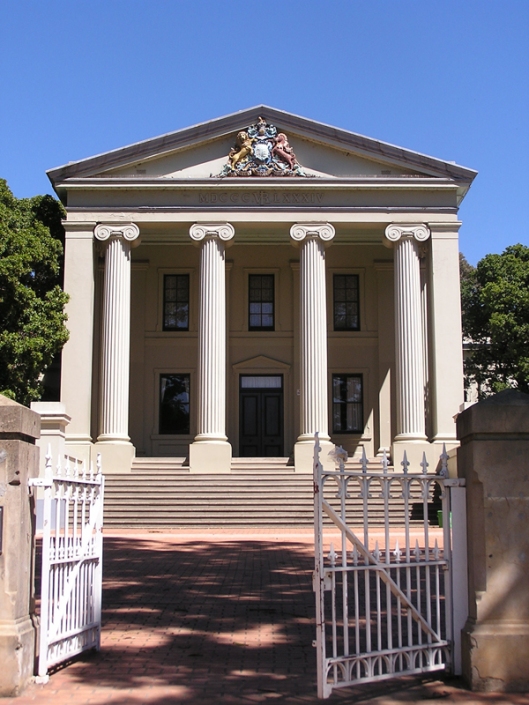 Young Courthouse, James Barnet 1886 This High Victorian Classical building is now a school assembly hall, so no doubt Barnet still has the power to mould the young mind.
Young Courthouse, James Barnet 1886 This High Victorian Classical building is now a school assembly hall, so no doubt Barnet still has the power to mould the young mind.
Cowra Courthouse, James Barnet 1880 with extensions and renovations by Barnet’s successor, Government Architect Walter Liberty Vernon 1909.
Given Vernon’s overlaid renovations this does not look so much a Barnet courthouse but it still displays that simple balance of masses that Vernon’s additions and Federation/Anglo Dutch/Arts and Crafts decoration could not disguise. Indeed I suspect that Vernon knew a good thing when he saw it and his additions acknowledge the best of the earlier Barnet building.
Given Vernon’s overlaid renovations this does not look so much a Barnet courthouse but it still displays that simple balance of masses that Vernon’s additions and Federation/Anglo Dutch/Arts and Crafts decoration could not disguise. Indeed I suspect that Vernon knew a good thing when he saw it and his additions acknowledge the best of the earlier Barnet building.
While Barnet designed many more buildings, over 600 in fact, including 130 courthouses, and many of his buildings display an impressive magnificence, including my favourite pile of Pyrmont sandstone, the resplendent Renaissance revival Lands Office on Bridge Street in Sydney, it has always been his country buildings that have captured me and I’m particularly fond of his country courthouses. They may not be his most difficult or most impressive work but to my mind they are his most human, creating a levelling link between these rough hewn early settlements with their hope for a bigger future, and the great world beyond; in essence providing a solid and enduring symbol of the unity and common purpose shared by all of the people of the colony and it may not be too long a bow to suggest that the operation of these buildings, their success as social machines through time, contributed in no small way to Federation and the dawning of Australian nationhood.
Post Script
A little Googling will turn up all manner of Barnet results and it’s surprising how prolific he was. The above examples of his work are just a taste. His buildings are literally everywhere. Goulburn particularly has a number of very fine Barnet buildings, as well as others by Colonial and Government Architects Blacket, Vernon and Lewis, but I’ve not included them here because I didn’t become familiar with them until much later. They were not part of my boyhood scene. Indeed Goulburn deserves a piece all to itself , which I may get round to when time permits.
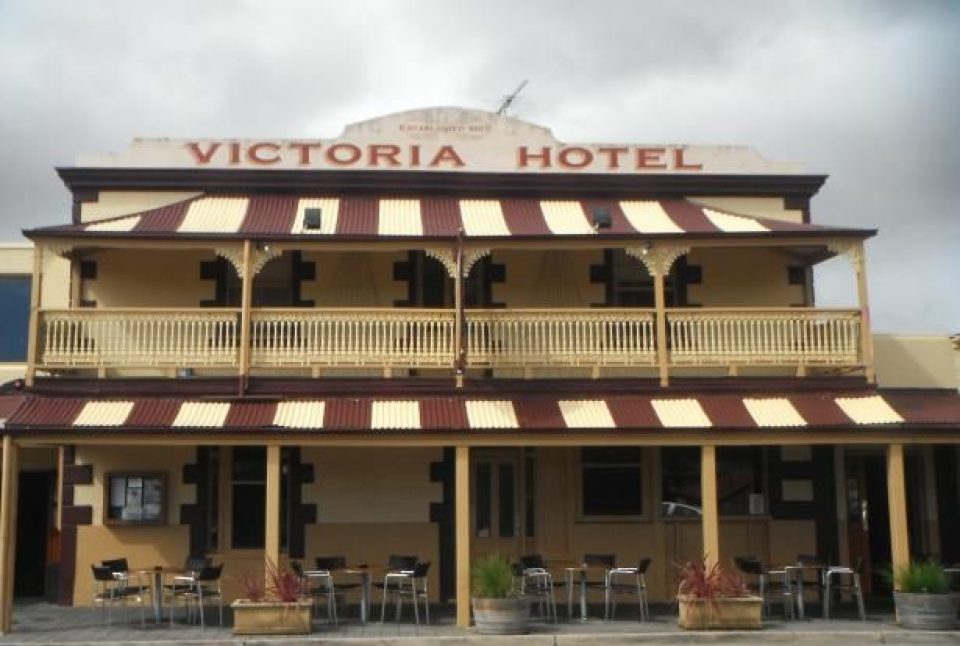


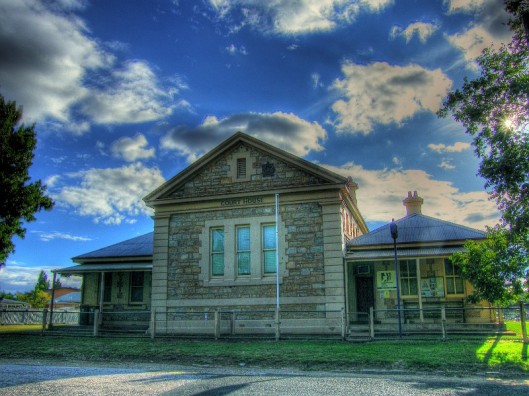
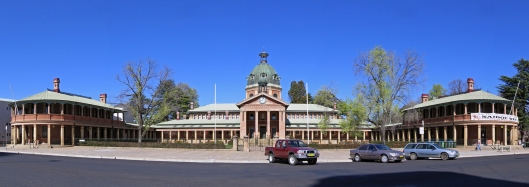
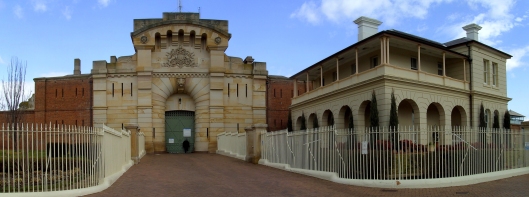
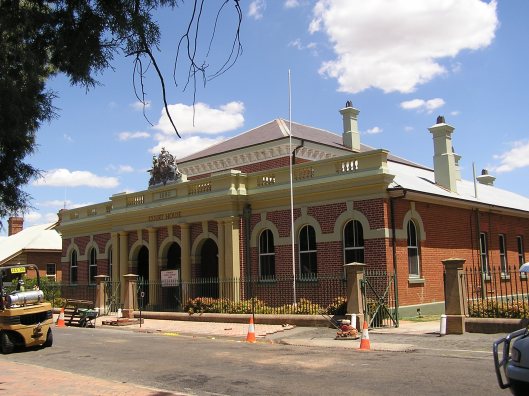
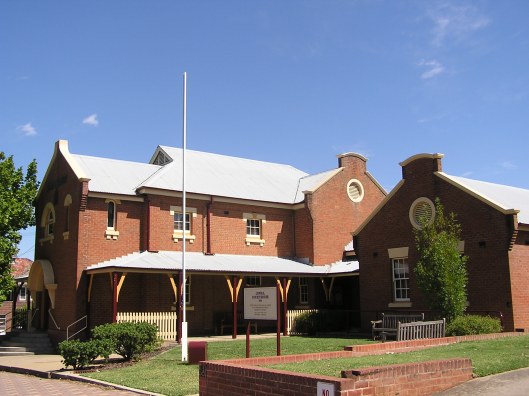
Pingback: One Man; Over 1300 Public Buildings: James Barnet | jml297
While waiting for Waz’s latest to come up and get through customs, we went and saw Nebraska. A corker of a movie. Just when we had almost given up having watched a string of lukewarm movies.
Go and see it you piglets. A most positive and endearing movie. Even I laughed.
LikeLike
Albury PO is another wonderful Italianate Barnet building but I suspect he would have been responsible for the design only. At the time of the planning and erection of the Albury PO, he was engaged as architect in charge of the Sydney International Exhibition Building, a magnificent pile that arguably put Sydney on the international map architecturally, and the colony as a whole in terms of its manufactures and produce. He would have also been overseeing both the Bathurst and Forbes Courthouses simultaneously.
The Exhibition was a huge success but the building burned to the ground in September 1882 just a few years after it opened. While it appeared to be a solid masonry building in parts, it utilised mostly timber in its internal construction and framing and the predominance of this timber throughout the building provided sufficient fuel to guarrantee the place was completely consumed by the fire.
The only bits left are a few pieces of broken dressed stonework on a grassy verge on lower Macquarie Street, and the main gates which now serve as a major access point for the Botanic gardens. Most people aren’t aware that such a vast and important building was ever there.
He had to prepare over 400 technical drawings for the Exhibition project as well as boss the building process. Apparently he didn’t approve of the government appointed builder. Given this I suspect that his more important projects would have precluded him from attending the job in Albury; so no Viv, he probably never got to Albury and I suspect that he never saw many of his buildings in the more far flung corners of the colony.
I am planning to take a look at his diaries at the State Library and if I find anything different there I’ll let you know.
http://sydney-city.blogspot.com.au/2014/03/botanic-gardens-palace-garden-gate.html
LikeLike
We will all be out there with our Barnett antennae honed, Warrigal. The man’s output is incredible, surely.
LikeLike
I recalled how impressed I was with some public buildings in Rockhampton and went to have a special look at photos I have of them. Looked at some records online. I was interested that it can be not easy to quickly establish who the architects are because the preliminary look revealed they are called loosely by whatever public instiutution commissioned them or they were employed by as builder or architect hence ‘the Colonial architect’ pr the ‘Public Works Department’. I thought the latter concept was cute of ‘a Public Works Department’ being the architect of a building. 🙂 Saves looking up records to discover who the architect was. More power to this lovely essay, Warrigal.
LikeLike
“We will all be out there with our Barnett antennae honed”.
Here you’ve succinctly hit the nail on the head, ‘shoe. In the past my opinion of all these sorts of buildings has been clouded by a slight sneer at their very Colonialism. Now I see that Colonialism as appropriate in its historical context and something worth preserving for that alone.
But more, now that veil of prejudice is lifted it also leaves me free to appreciate particularly good examples of the species.
It isn’t often that you read an article that opens up your world.
LikeLike
I actually blushed at your last comment.
And Barnet might have too, as well as puffed up a little with Victorian male pride. He had some very very specific theories, as all Victorian gentlemen of education had, regarding the role of public architecture in uplifting the spirit and educating the masses.
Now I’m not so sure how successful those theories would have been at the time he was working. The “masses” probably had other things on their collective mind than the Classical aesthetics of Barnet’s buildings, but your comment seems to prove that his work still has the power to illuminate.
LikeLike
What wonderful reading! Voice, thank you for picking up on that idea and running with it. I went off looking at those Rockhampton buildings I said I have photos of thinking I would see in them something more than nice. I did. The aggrandisement of my status to wondering there may have even been a sort of architect’s bake-off creating these fabulous public buildings had never occurred to me. So for one, whether that concept is true or not, I looked towards other indicators in my personal experience stimulated by the article.
LikeLike
I addressed the comment above to you too, Warrigal and editing I mistakenly took your name out.. sorry to not make it clear I was commenting to you too.. gee many thanks for this article
LikeLike
Lovely stuff, guv.
I started with an irreverent limerick about Arbroath, however I am under supervision at the moment; a most peculiar circumstance for an old boy such as myself. So it didn’t publish.
Some great descriptions here, however I love the clinical photography.
I use a Canon EOS 550D with a 18-200 lens. It’s slightly bulkier to carry, with the lens attached, however it saves changing.
My son ( in The UK) bought a later model the EOS 660D, but being tad tight he bought the two 18-555 and a separate long range(bundled at a special price).
He wishes that he had taken my advice.
I’m wondering a) what camera you used and b) did you touch up the pics to get those beaut colours both in the sky and buildings.
LikeLike
None of the images here are my copyright. They have been sourced from sites on the web, however I have corrected and graded those that required it. I have to say that any skill displayed in the images is the original photographers alone and the quality of the shots derives from those skills rather than any futzing in photoshop on my part.
LikeLike
From Wikipedia;
“More than three hundred courthouses have been built in New South Wales since settlement. The oldest existing Local Court in New South Wales is the Local Court at Windsor which was built in 1821.[1]”
Assuming most were built during the late 18 early 19 hundred, you wonder why so many. I would have thought the population would have been very small in NSW. Perhaps the courthouses doubled as jails as well or held weddings and funerals or even local balls or other social events.
Perhaps crime was high too and the courthouses were flat out dealing with that. Almost anything was a crime then and punishment might well have been the order of the day.
The Court house in Goulburn and its grounds were also the venue for hangings and the old plane and elms in front might well have born witness to those hangings.
LikeLike
Courthouses traditionally had and still have cells but they were not generally places of permanent incarceration. That’s what Goulburn and Bathurst were for.
While it sounds nice to think of a courthouse as a ballroom, by the time these single purpose courthouses where being built to replace the more general purpose public buildings erected in the earliest days of the colony, their function was entirely legal and judicial.
They were not just the courts of law where disputes as varied as theft, assault and murder, as well as boundary and other property disputes, libel and slander, of which there was a lot in the early colony, were determined; they were also the venue for coroners courts and courts of other competent jurisdiction, as well as public enquiries and other matters of a quasi judicial kind.
Then, as today, there always seemed to be enough disputes to fill judges calendars, and while there might not always have been a sitting judge, there would none the less have been magistrates of various kinds to handle the lesser matters. Indeed many judges in those days used to do the rounds by horse and cart, appearing at various courthouses throughout the year, while a permanent staff manned the battlements day to day at the local courthouse.
I don’t think that the central west at the time we’re speaking off would have been any more lawless then than it is now, notwithstanding the Ben Halls of that world. Poverty and general hardship would have led to higher arrests for theft and other property offences, but for many 19thC small time crooks a few months in chokey would have been respite from a hard life on the outside and a chance to bone up on B&E technique.
LikeLike
I’ve often wondered the same thing but I haven’t been able to find any references to work or commissions outside NSW. He was the “NSW Colonial Architect” and given the work load he seems to have laboured under, I doubt he could have found the time for “foreign orders”, but I just don’t know.
LikeLike
Please forgive this double post. This is obviously a response to Viv below, but what with all the mandatory login requirements of wordpress it appears it appears I’ve put it up twice.
I resent sites that “require” logins. They do not serve the blogger or respondents, but do allow profiling and subsequent data mining by WordPress and its associates.
Remember if you get something for free in cyberland, you aren’t the client you’re the product.
LikeLike
Good to see you back Warrigal, nice story.
LikeLike
Jus’ tryin’ t’ bring a little couth back to the proceedings buddy. Glad you like it.
LikeLike
Great article and an excellent topic. I gather Barnet did all his work in NSW. Do you know if he designed anything for Victoria?
LikeLike
I’ve often wondered the same thing but I haven’t been able to find any references to work or commissions outside NSW. He was the “NSW Colonial Architect” and given the work load he seems to have laboured under, I doubt he could have found the time for “foreign orders”, but I just don’t know.
LikeLike
I figured that after I posted. But there might be something he did before he got the official Architect gong.
LikeLike
Well it got me thinking – he made it to the Murray – Albury: Albury Post Office is one of an important ensemble of both earlier and later commercial and civic buildings of note in the historic Dean Street precinct, including the 1860 Court House and the Technical College of 1885, also designed by Barnet. The Colonial Mutual Insurance Building of 1930 and the transport and General Insurance building of c. 1935, are also local landmarks which complement the Post Office in their tower usage. The post office is also one of a set of major Government buildings which were introduced to the city in rapid succession, including Barnet’s Railway Station and the Primary School (both 1881). This collection of buildings has a concentrated aesthetic force which is outstanding in a regional context.
LikeLike
Well he designed stuff for Albury. He may not have been here at all.
LikeLike
I’ve had a look through my notes and a couple of references, trawled the net, and it would seem that at the time that the Albury PO was being built he was also engaged on several other projects, including Bathurst and Forbes above, and he would have had continuing obligations to The Garden Palace completed in 1879 for The Sydney International Exhibition.
That building was one of his finest pieces of work but it was knocked up in double quick time, about 9 months, and constructed mainly of wood with faux stone dressing. It burned to the ground in 1882, completely consumed, and, other than Barnet fans and architects, most people are completely unaware that it ever existed. Google “Garden Palace” or “Sydney International Exhibition Building”.
Given the above obligations it’s quite possible that Barnet never even visited Albury, though once again I can’t say for sure. At that time Albury was several days away from Sydney. The rail link to Albury didn’t open until 1883 so it would have been a train and buggy journey and frankly I just don’t think the time would have been available.
I am planning to have a look at his diaries at the State Library and if I find out otherwise I’ll let you know.
LikeLike
I think I’ve seen most of these buildings at some stage. Yes there’s a unifying theme, not just in the design, but in the quality and workmanship, so they have stood the test of time. Thanks for putting the time to research and write this!
LikeLike
I’m in two minds about these types of buildings that you find in so many country towns. On the one hand they look so much like Colonial administration buildings. Meaning that they are constrained by the requirement of looking … credible, and of recognisably representing European/British/Western authority. On the other hand, they look so much like Colonial administration buildings. Meaning they embody an important part of our history.
Back in Adelaide a lot of the big old hotels at one stage pulled down their verandahs because big old verandahs were so quaint and old-fashioned. Later many were re-instated because there were quaint and historical. It’s a shame that more buildings in Sydney centre didn’t survive long enough to reach that historical recognition.
I really like the little Molong courthouse with its Australian features.
LikeLike
We can all thank Jack Mundey and the Green Bans for saving a great deal of our colonial heritage; in fact for bringing heritage issues in general to a wider public. Prior to the BLF’s activism in this area there was little legislation protecting environmental, heritage and community sites of high importance from the venality and greed of corrupt politicians and developers.
I’m very proud of having been thumped by a copper while protecting the ban on Victoria Street in the Cross. That copper and all the rest there that day were being manipulated by Frank Theeman, the developer, and a corrupt police administration addicted to a culture of brown bag payments made by the developers to ensure that the law saw it there way.
LikeLike
Well done you. A lot of central Sydney was gone before I arrived, then they knocked down a some more under the facade that all that really mattered was the facade.
LikeLike
Thanks to those forward thinking unionists, and your good self, Waz.
LikeLike
I’ve spent some time in Dubbo over the last year for work and I’m impressed by much of the architecture of the late 1800’s. You also picked one of my favourite buildings in the city, the Lands Department building. I’ve spent a lot of time in that building pouring over records. The map room didn’t change from the time it was built nor did those that worked in that room either. The modern (sic) lifts didn’t work that well so I my fitter days I walk up the stairs on the western side to the third floor. All that lovely cedar. I had reason to visit the Western Lands Division offices up the road looking for information. That was definitely late 1800’s even down to the caged lift. The attitudes hadn’t changed from that time either.
Nowadays the Lands Department has moved up to Queens Square. the government has no idea what to do with it I think, probably be redeveloped into a hotel or the like, like many of these colonial buildings seem to.
Googling Barnet, I see he designed the National Art School where the youngest hopes (will go) to go next year. Thanks for this Waz, beautiful buildings and the writing that goes with it.
LikeLike
I once had the singular pleasure of being taken on a tour of the Lands Office by a member of the Government Architects Office, a fellow Barnet fan.
We went all over the building, the grand staircases and beautiful rooms, but also crawl spaces, voids and other difficult locations.
I came away having been fascinated by the notion of “passive air-conditioning” employed there. The thermal mass of the building ensures a seasonal lag in internal temperature of some 5 to 8 degrees and in addition the building employs a passive air flow system that draws outside air in through vents on the outside of the building down through wall voids to large basement areas where the air cools before being drawn up through an ingenious system of vents to the rooms and spaces above, providing cool air flow before being drawn through another system of vents and vented out the top of the building.
It was a hot summer’s day outside and yet the internal temperature was around 22 degrees. That’s a pretty steep thermal gradient and not a single watt of power was required.
I’ve often wondered since then whether or not Barnet was directly involved in that design feature.
LikeLike
I have recollections of going onto the roof in my college days. I don’t recall the reason for this, it may well have been for its layout. I also remember the internal temperature seemed constant. There were places were modern improvements seem to block the airflow which made those places stuffy.
LikeLike
Goulburn’s Courthouse is another fine example of Barnet’s work. I spent a few mornings there waiting to be chosen as a juror. I never was but ended up getting meat pies at Bryants café.
LikeLike